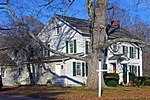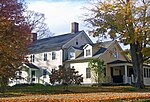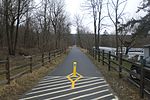The Kildonan School
The Kildonan School was a private coeducational boarding and day school in Amenia, for students with dyslexia and language-based learning disabilities. It offered daily one-to-one Orton-Gillingham language remediation and a college preparatory curriculum for students in grades 2-12 and PG (post-graduate). In July 2019, the Kildonan School announced that it would not reopen for the 2019–2020 school year due to low enrollment and insufficient funding. Its parent organization, the Kildonan Organization, partnered with Marvelwood School in 2020, where it operates Orton-Gillingham teaching, the Kildonan Teacher Training Institute, and Camp Dunnabeck, its summer camp program.
Excerpt from the Wikipedia article The Kildonan School (License: CC BY-SA 3.0, Authors).The Kildonan School
Morse Hill Road, Town of North East
Geographical coordinates (GPS) Address Nearby Places Show on map
Geographical coordinates (GPS)
| Latitude | Longitude |
|---|---|
| N 41.89304 ° | E -73.5546 ° |
Address
Morse Hill Road 423
12501 Town of North East
New York, United States
Open on Google Maps








